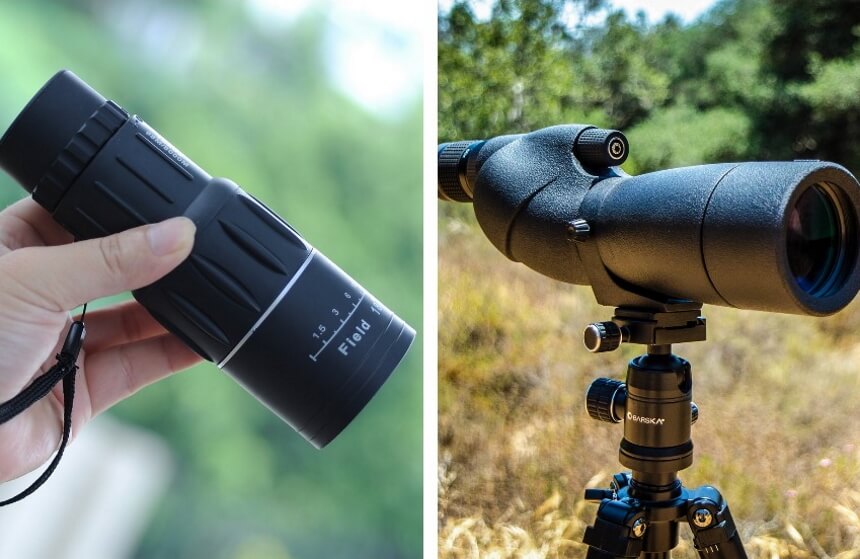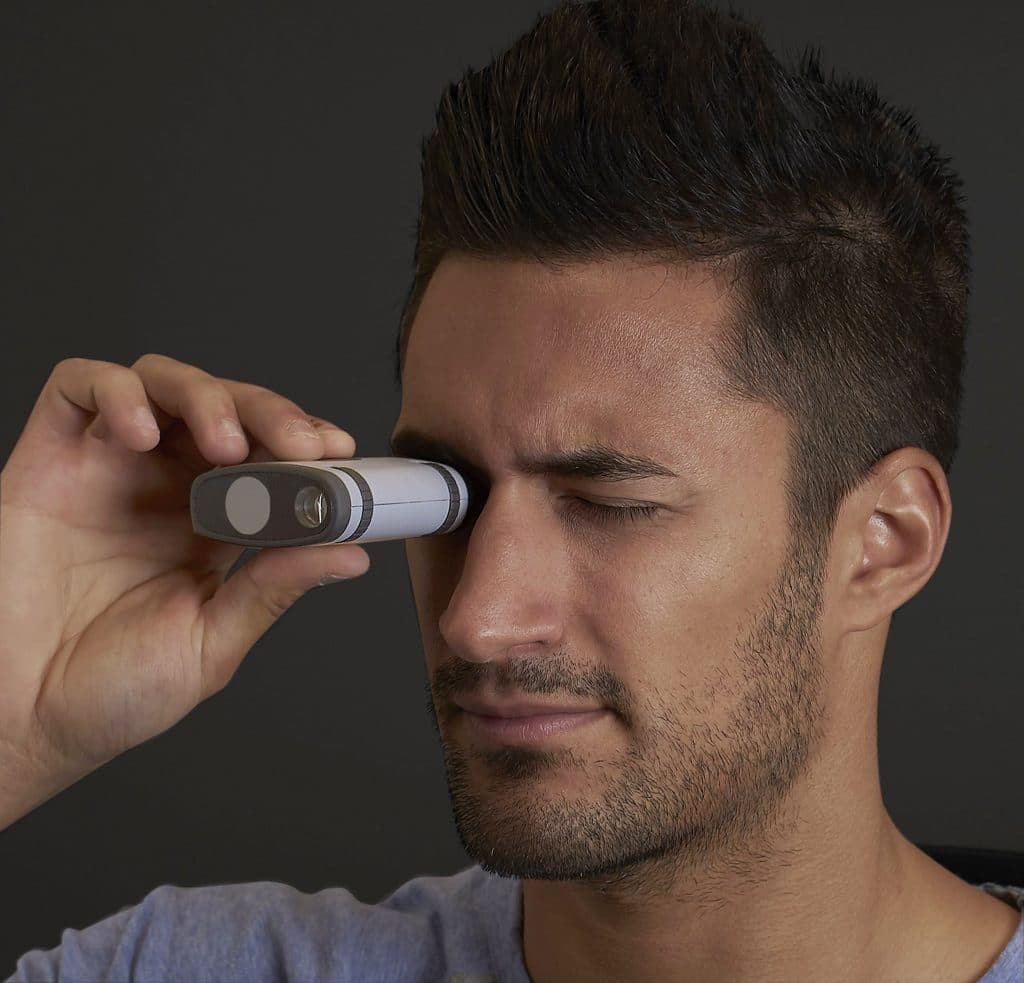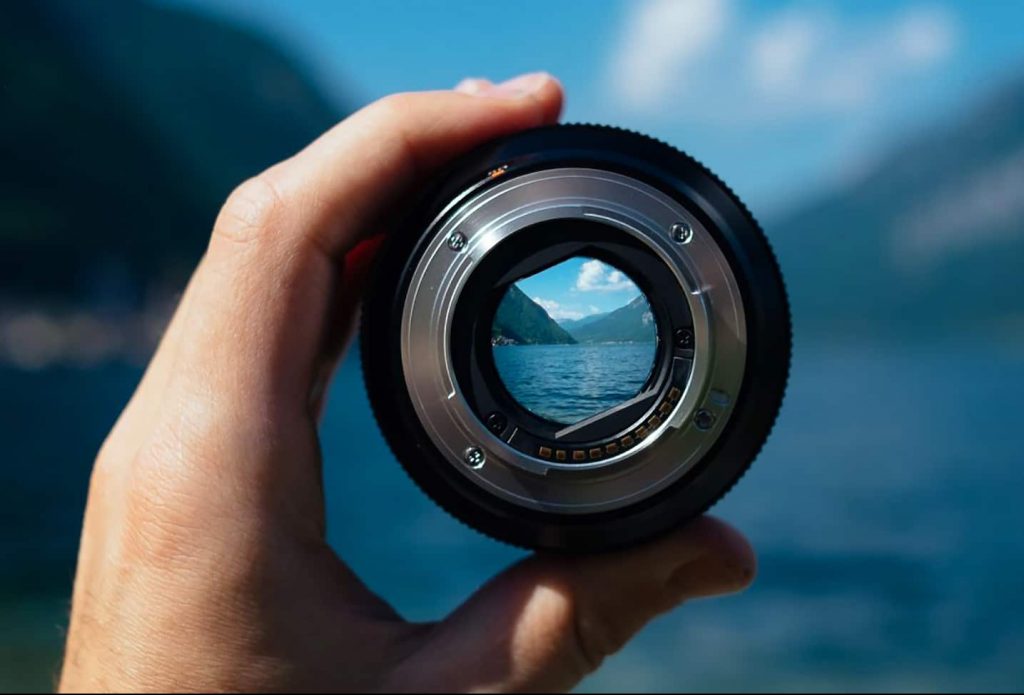

You’ve probably heard of the phrase ‘two eyes are better than one.’ Does this mean that binoculars are always a better choice? Well, according to our monocular vs. binocular review, this is not always the case. As you make a decision between the two gadgets, you shouldn’t make your choice based on sheer popularity. Most people assume that binoculars offer the best viewing option and have a superior vision, but that’s not always the case.
There are instances where high-quality monoculars come in handy and are the most practical option. In this guide, we’ll tell you everything you need to know about binoculars and monoculars, including which one you should choose. At the end of this guide, you should be better positioned to make a purchasing decision based on your needs.
Binoculars are optical handheld devices that have 2 telescopes aligned in the same direction and mounted side by side. They allow you to use both eyes when viewing objects that are far from you and are mostly associated with game viewing. They’re a great option if you’re looking for an optic device for general purposes.
According to multiple recommendations, the Celestron SkyMaster is one of the best models in the market. It allows you to view objects over long distances and can be used for terrestrial purposes. These binoculars also come with accessories such as Tripod Adapter and Case, Neck Strap, Objective Lens Cap, Lens Cloth, Carrying Case, and a manual. They are waterproof and feature impressive BAK-4 prisms.
There are 6 main types of binoculars in the market:
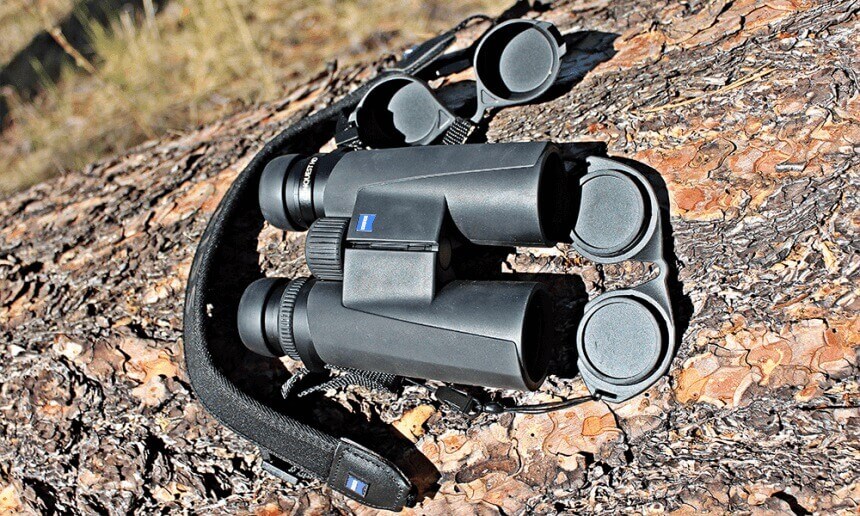
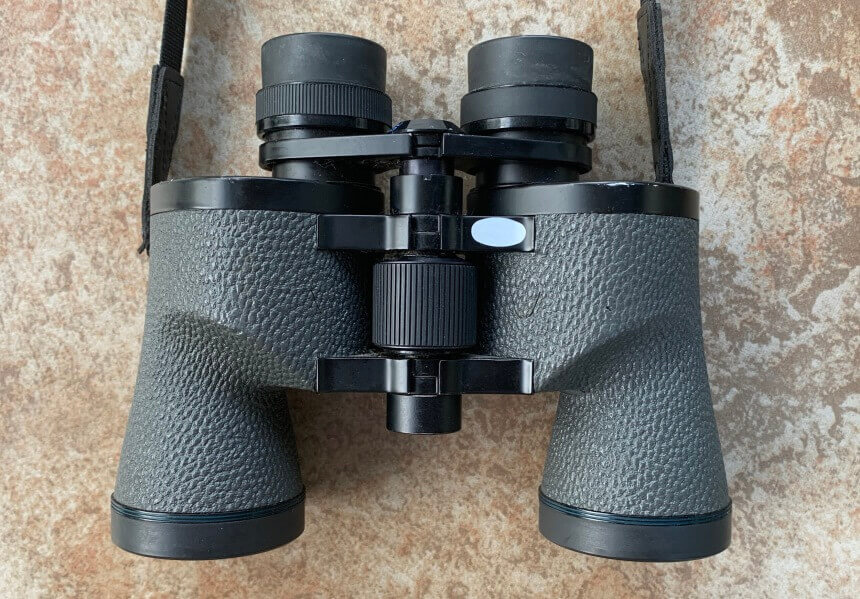

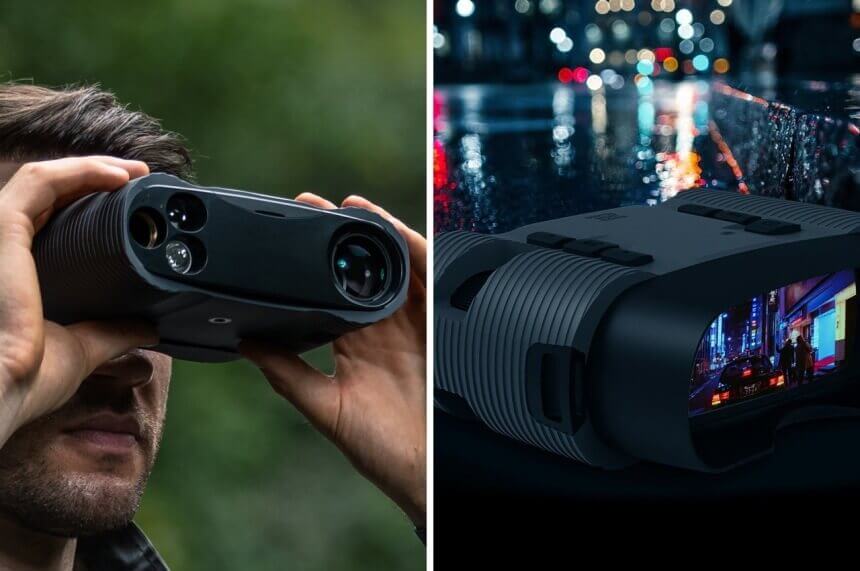
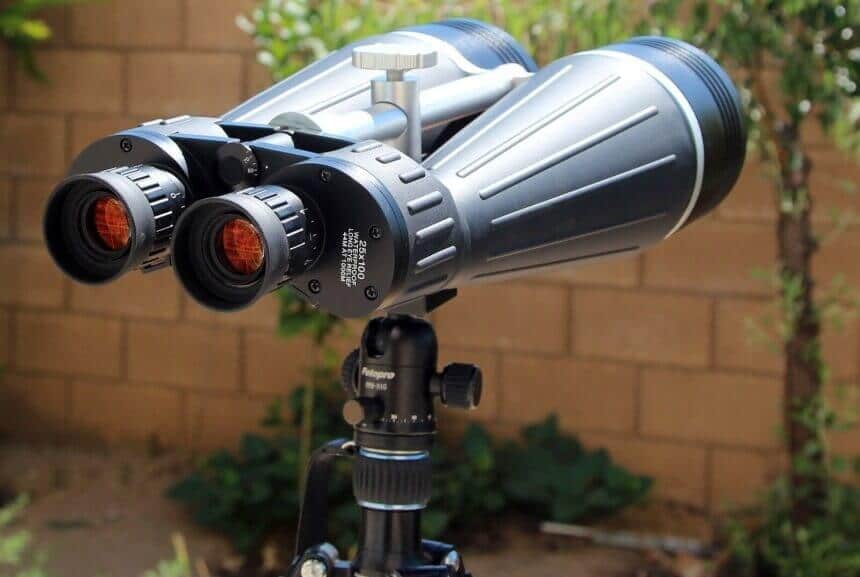
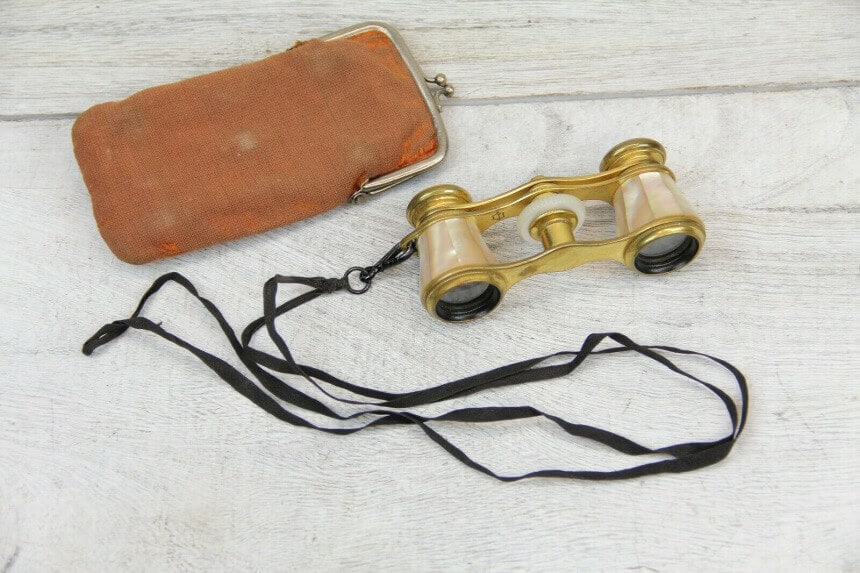
As you can see, there are varying types of binoculars for different activities. So, your purchasing decision should majorly be guided by your intended use.
Binoculars typically have a wider field of view compared to monoculars, no matter how low their magnification power is. This is because they have twin viewing tubes, so their range of vision is wider. Their wide field of view makes them a great option for active events, scanning, and scouting. This feature, however, also makes them an unsuitable option for night vision situations. They make it difficult for your eyes to adjust back to their natural vision at night.
With optic devices, there’s only one price rule; you get what you pay for. So, high-quality binoculars will always cost more. Binoculars are also more expensive compared to monoculars because you typically get double the optic components and lenses. However, this doesn’t mean that monoculars are the clear winner. To compensate for the price, binoculars give you a greater field of vision.
The magnification specs and amplification levels of both binoculars and monoculars are very similar. They offer you clear images over long distances but not enough for in-depth astronomy. Binoculars, however, have a clear-cut edge on this feature. When you view magnified images for long, you start experiencing eye fatigue. Binoculars allow you to view objects for longer since you’re using both eyes. With monoculars, however, only one eye does all the work, so it experiences eye fatigue faster.
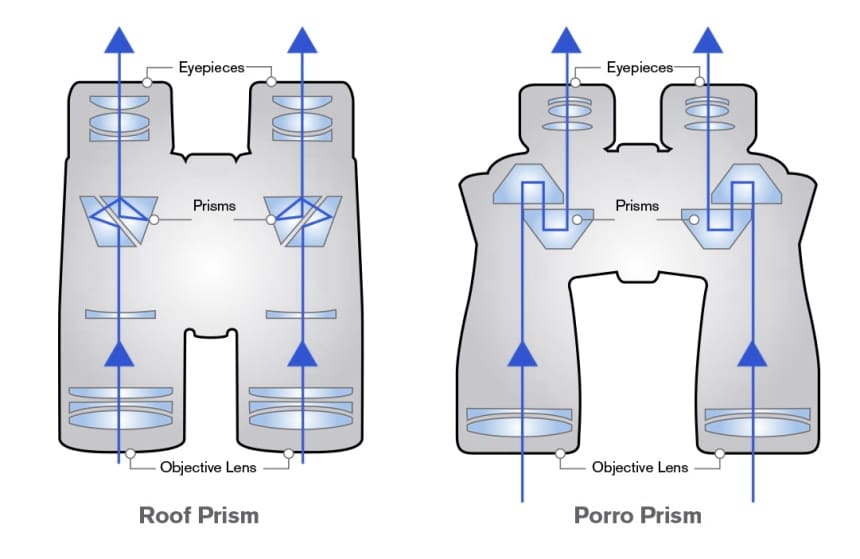
There are various pros and cons of using binoculars:
Pros:
Cons:
The best way to describe monoculars would be one-half of a set of binoculars. These devices are almost similar to telescopes because they come with one viewing tube, but they don’t have magnification capabilities. Monoculars and telescopes also process light using different optics.
Since monoculars are almost similar to binoculars and telescopes, they’re often found in gray areas in the optics world. They are, however, a great option for various tasks such as viewing moving objects. According to expert reviews, the Pentax VM monocles are the best in the market. Their exterior is non-slip & rubber-coated, and they are palm-sized, making them bereft for single-hand operation. This model also comes in an all-weather construction, is waterproof, and has a washable body. Most importantly, they guarantee a bright and clear view.
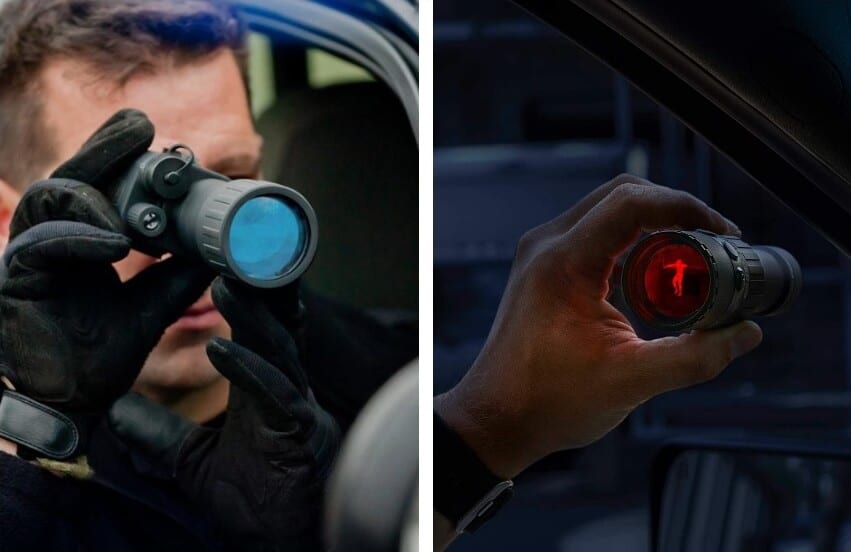
Binoculars are undoubtedly better when it comes to the field of view. Since monoculars have only one viewing tube, their range of vision is limited. This feature, however, makes them a great option for night vision situations because the eye you use with your night vision binoculars will adjust easily to the dark compared to using both eyes with binoculars.
Monoculars provide true fields of view, which are almost the same as that of telescopes, while binoculars offer a wide field of view. This is, however, less of a concern because monoculars are mainly used for target precision spotting.
Monoculars are generally more affordable compared to binoculars. This is because they only have one viewing tube.

Monoculars mostly come with a Porro prism design, which was initially used in binoculars. The lens on a monocular captures light from the object and then amplifies it. The prism, on the other hand, captures images and inverts them, which is important because amplified light usually produces upside-down images.
There are various advantages and downsides of using monoculars:
Pros:
Cons:
When choosing between binoculars and monoculars, you should make your decision based on several factors, most importantly the intended use. You should also identify whether you need a bigger field of vision, in which case the binoculars will always win. According to NCBI Trusted Source Binocular advantage for prehension movements performed in visually enriched environments requiring visual search The purpose of this study was to examine the role of binocular vision during a prehension task performed in a visually enriched environment where the target object was surrounded by distractors/obstacles. www.ncbi.nlm.nih.gov , binoculars also come in handy when you’re in a complex environment full of obstacles and distractions. If you’re unsure of the required field of vision, then there’s a high chance that monoculars will do.
Here’s a quick overview of the gadget you should choose depending on the activity.
Monoculars are the best for this activity. However, binoculars can also enrich your birdwatching experience. This is why we have compiled a review of the best binoculars for birdwatching to help you make an informed purchasing decision.
Hunting is mostly a stationary activity as it requires you to lay low and watch your prey closely. For this activity, you’ll need a pair of binoculars as they have a wider range of vision.
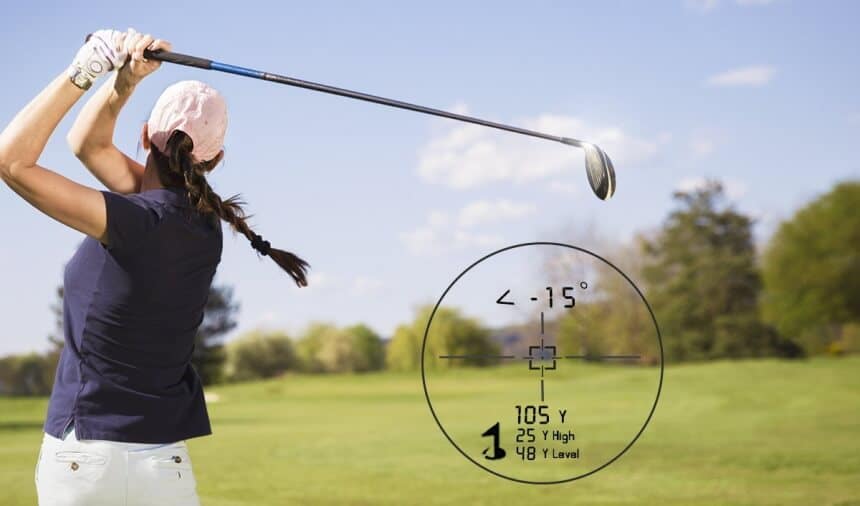
Backpacking and scouting are exciting outdoor activities, and to get the most of them; you should get a pair of binoculars. However, monoculars also come in handy because they’re lightweight and easily portable. If you’re in the market for the most reliable and high-quality monoculars for backpacking, we’ve compiled a quick review just for you.
Some people argue that binoculars are the best for night vision, while others are monoculars. Well, binoculars are the ideal option, but you should go for night vision binoculars. They are specifically designed for use in low-light situations.
If you feel at home among aquatic creatures, you should invest in a set of binoculars. You should get marine binoculars as they’re specifically designed for use underwater and are fog and waterproof. They come in low to moderate magnification powers, and even though they give you a wider field of vision, you may encounter shaky images.
Binoculars are the best for hiking and tracking. They allow you to take in the serenity of the surrounding environment due to their wider field of vision.
Monoculars have the same build as a telescope, only less powerful. They make it easy to track objects in motion, which is why they’re popular among stargazers.
Monocular vs. binocular: which one should you go for? Well, it all depends on what you’re planning to use them on. For instance, if you’re going to an opera or sporting event, you should carry monoculars. If, on the other hand, you’re outdoors, hiking, scouting, backpacking, etc., you should get binoculars. We, however, recommend that you own both because while binoculars have a wider field of view, they are bulky and difficult to carry around. On the other hand, there are instances where monoculars are very useful.
